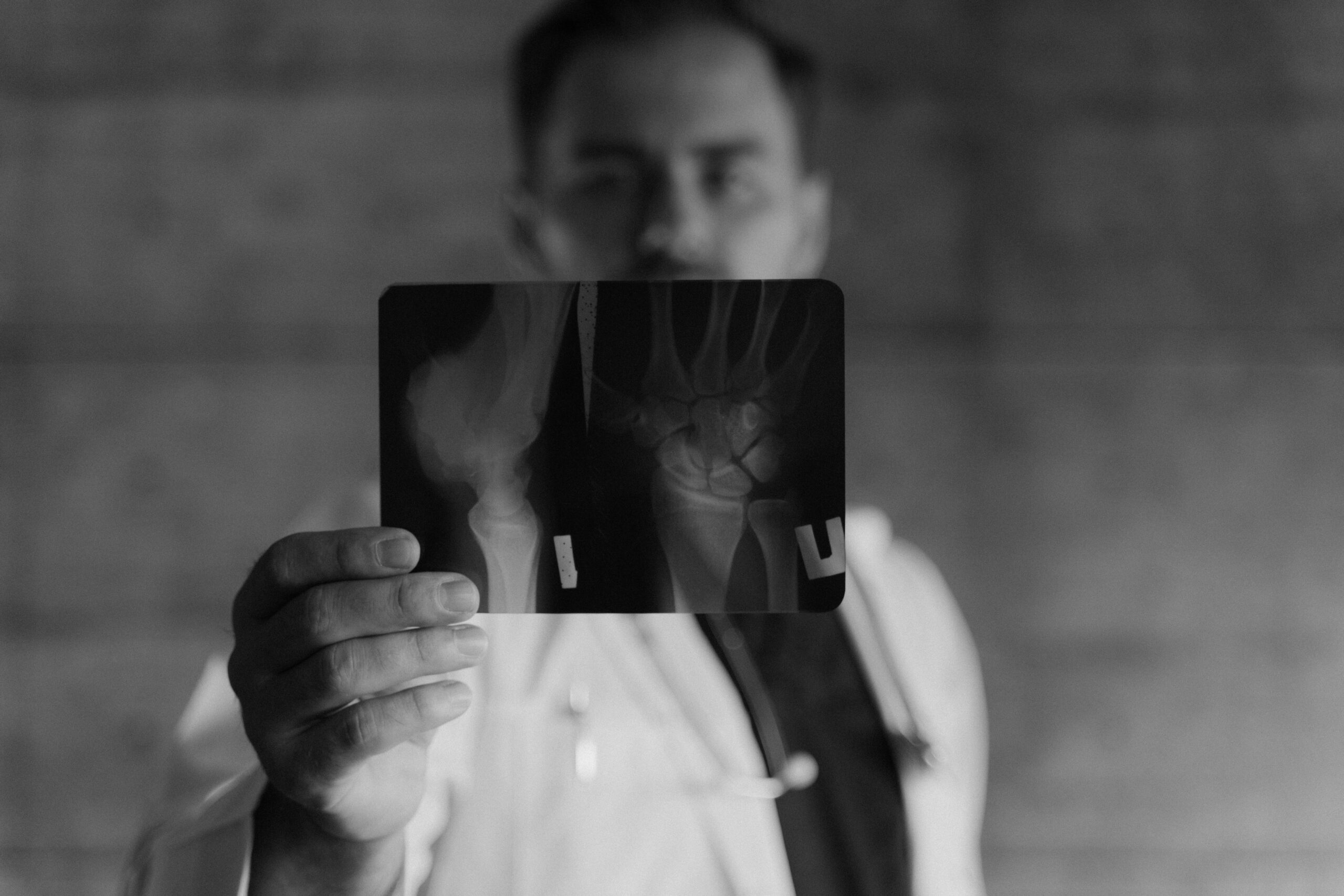Cataract Surgery CPT Codes: Essential Billing Guidelines
Cataract Surgery CPT Codes: Billing & Coding Guidelines
Cataract surgery is one of the most common and critical procedures in ophthalmology, aimed at restoring vision by removing the clouded lens and replacing it with an artificial one. Understanding Cataract Surgery CPT (Current Procedural Terminology) codes is essential for healthcare providers and medical coders, as these codes standardize the reporting and billing process, ensuring accuracy and compliance with insurance requirements.
Proper coding is vital for timely reimbursements, minimizing claim denials, and maintaining the financial health of a healthcare practice. By accurately coding cataract surgeries, providers can focus on delivering quality care while coders ensure the financial stability of the practice.
Medical Billing for Cataract Surgery
The billing and coding for cataract surgery have undergone revisions, with the original effective date being October 1, 2019, and the latest revision taking effect on January 1, 2024. Healthcare providers must stay updated with these changes and understand that procedure codes might be subject to National Correct Coding Initiative (NCCI) edits or Outpatient Prospective Payment System (OPPS) packaging edits. Before billing Medicare, it’s essential to refer to NCCI and OPPS requirements.
For services requiring a referring or ordering physician, the claim must include the name and National Provider Identifier (NPI) of the referring or ordering physician to ensure compliance and avoid claim denials. A key aspect of cataract surgery billing is distinguishing between standard and complex procedures.
For instance, CPT code 66982 is designated for complex cataract surgeries, which involve additional devices or techniques not typically used in routine cataract surgeries. This includes procedures such as iris expansion, suture support for intraocular lenses, or primary posterior capsulorhexis, often involving patients in the amblyogenic developmental stage.
Accurate documentation in the operative report is vital, clearly detailing the specific methods and reasons for categorizing the surgery as complex. By adhering to these best practices in documentation, coding, and billing, healthcare providers can ensure proper reimbursement and maintain the financial health of their practices.
Significance of Accurate CPT Coding in Cataract Surgery
Ensuring accurate CPT coding in cataract surgery is vital for numerous reasons, including securing proper reimbursement, adhering to regulatory standards, and promoting clear communication among healthcare professionals.
Accurate surgery center rcm and coding helps prevent billing mistakes that could result in claim denials or payment delays, thereby protecting the financial health of healthcare practices.
Furthermore, precise coding accurately represents the level of care provided, which is essential for patient records and overall healthcare quality.
Key factors for correct CPT coding in cataract surgery include:
Pre or Postoperative Care: If the surgeon handles both pre-and post-operative care, they should bill the CPT code(s) without using modifiers “-54,” “-55,” or “-56.” However, if post-operative care is shared with another physician, modifier -54 (Surgical care only) should be added to the procedure code for the surgery date, and modifier -55 (Postoperative management only) should be used for post-operative care dates.
Anatomic Modifiers: To specify which eye was operated on, use the anatomic modifiers left (-LT) or right (-RT) with the procedure code.
Cataract Extraction: When cataract extraction is needed to get a clear view of the fundus for treating diseases in the back of the eye, the appropriate cataract diagnosis code should be listed as the primary diagnosis, with the posterior segment disease as the secondary diagnosis code.
Phacoemulsification with Intraocular Lens Implant: Ensure the use of the correct CPT code for phacoemulsification procedures that include the implantation of an intraocular lens.
Common Cataract Surgery CPT Codes
Cataract surgery involves various procedures, each with specific CPT (Current Procedural Terminology) codes to ensure precise billing and documentation. These codes help standardize the reporting process, facilitating accurate reimbursement and compliance with regulatory standards.
Below are some common CPT codes used in cataract surgery, categorized by the type of procedure performed.
CPT Codes for Extraction of Lens and Lens Material
|
CPT Codes |
Description |
|
66850 |
Removal of lens material using techniques like phacoemulsification, which employs mechanical or ultrasonic fragmentation and aspiration |
|
66920 |
Removal of the entire lens from within its capsule |
|
66940 |
Removal of the lens material outside the capsule, not covered by other specific codes like 66840, 66850, or 66852 |
CPT Codes for Cataract Extractions with Implant
|
CPT Codes |
Description |
|
66982 |
Extracapsular removal of a cataract and insertion of an intraocular lens in a single stage, using manual or mechanical techniques such as irrigation and aspiration or phacoemulsification. This is considered complex due to specialized devices or techniques or when performed on patients in the amblyogenic developmental stage |
|
66983 |
Intracapsular removal of a cataract and insertion of an intraocular lens in a single-stage |
|
66984 |
Extracapsular removal of a cataract and insertion of an intraocular lens in a single stage, using manual or mechanical techniques like irrigation and aspiration or phacoemulsification |
|
66985 |
Insertion of an intraocular lens as a secondary implant, not done alongside cataract extraction |
|
66986 |
Insertion of an intraocular lens as a secondary implant |
|
66987 |
Extracapsular removal of a cataract and insertion of an intraocular lens in a single stage, using manual or mechanical techniques like irrigation and aspiration or phacoemulsification. This is considered complex due to specialized devices or techniques or when performed on patients in the amblyogenic developmental stage, with endoscopic cyclophotocoagulation |
|
66988 |
Extracapsular removal of a cataract and insertion of an intraocular lens in a single stage, using manual or mechanical techniques like irrigation and aspiration or phacoemulsification, with endoscopic cyclophotocoagulation |
Exchange of Intraocular Lens and Disorders of the Lens
|
Disorders of the Lens (H25-H28) |
Description |
|
H25 |
Age-related cataract |
|
H26 |
Other types of cataracts |
|
H27 |
Other disorders of the lens |
|
H28 |
Cataracts associated with other diseases |
ICD-10 CM Codes for Cataract Surgery Medical Necessity
Cataract surgery often becomes necessary due to various underlying conditions and complications that impair vision. Here is a breakdown of the relevant ICD-10 CM codes indicating the medical necessity for cataract surgery:
E08.36 Diabetes mellitus due to underlying condition with diabetic cataract: This code is used when diabetes mellitus contributes to the formation of a diabetic cataract, necessitating surgery to restore clear vision.
E09.36 Drug or chemical-induced diabetes mellitus with diabetic cataract: Applied when diabetes mellitus caused by drugs or chemicals leads to a diabetic cataract, requiring surgical treatment to correct vision.
E10.36 Type 1 diabetes mellitus with diabetic cataract: This code specifies that type 1 diabetes mellitus is the cause of the diabetic cataract, necessitating surgery to improve visual clarity.
E11.36 Type 2 diabetes mellitus with diabetic cataract: Indicates that type 2 diabetes mellitus is responsible for the diabetic cataract, warranting surgical intervention to address visual impairments.
E13.36 Other specified diabetes mellitus with diabetic cataract: Used when diabetic cataract is present due to specific details not covered by other codes, requiring surgical correction to enhance vision.
H20.21 Lens-induced iridocyclitis, right eye: This code is for inflammation caused by the lens in the right eye, often requiring cataract surgery to manage the condition and restore vision.
H20.22 Lens-induced iridocyclitis, left eye: Similar to the previous code but affecting the left eye, necessitating surgery to address inflammation and improve visual function.
H20.23 Lens-induced iridocyclitis, bilateral: Denotes inflammation in both eyes due to the lens, requiring bilateral cataract surgery to manage the condition and restore vision.
H21.221 Degeneration of the ciliary body, right eye: Indicates degenerative changes in the ciliary body of the right eye, necessitating cataract surgery to correct associated visual impairment.
H21.222 Degeneration of the ciliary body, left eye: Similar to the previous code but affecting the left eye, requiring surgical intervention to manage visual disturbances.
H21.223 Degeneration of the ciliary body, bilateral: Denotes bilateral degeneration, requiring cataract surgery to improve vision affected by these changes.
H21.261 Iris atrophy (essential) (progressive), right eye: Progressive atrophy of the iris in the right eye, requiring cataract surgery to address the visual impairment.
H21.262 Iris atrophy (essential) (progressive), left eye: Similar to the previous code but affecting the left eye, necessitating surgical intervention to manage visual disturbances.
H21.263 Iris atrophy (essential) (progressive), bilateral: Bilateral progressive iris atrophy requiring cataract surgery to improve visual function.
H21.271 Miotic pupillary cyst, right eye: Indicates a cyst in the right eye, requiring surgical management through cataract surgery to alleviate visual impairment.
H21.272 Miotic pupillary cyst, left eye: Similar to the previous code but affecting the left eye, necessitating surgery to address the condition and associated visual disturbances.
H21.273 Miotic pupillary cyst, bilateral: Bilateral cysts requiring cataract surgery to address visual impairment in both eyes.
H21.531 Iridodialysis, right eye: Denotes detachment of the iris in the right eye, requiring cataract surgery to manage the condition and associated visual disturbances.
H21.532 Iridodialysis left eye: Similar to the previous code but affecting the left eye, necessitating surgical intervention.
H21.533 Iridodialysis, bilateral: Bilateral detachment of the iris requiring cataract surgery to correct visual impairments.
H21.561 Pupillary abnormality, right eye: Abnormal pupillary function in the right eye requiring cataract surgery to manage visual disturbances.
H21.562 Pupillary abnormality, left eye: Similar to the previous code but affecting the left eye, necessitating surgical intervention.
H21.563 Pupillary abnormality, bilateral: Bilateral pupillary abnormalities requiring cataract surgery to address visual impairments.
H21.81 Floppy iris syndrome: This condition affects iris stability, often requiring cataract surgery to manage complications.
H21.89 Other specified disorders of the iris and ciliary body: Used for specific disorders not covered by other codes, necessitating cataract surgery to improve vision.
H21.9 Unspecified disorder of the iris and ciliary body: Indicates unspecified disorders requiring surgical management through cataract surgery to enhance visual function.
H25.011 Cortical age-related cataract, right eye: Specifies cortical cataract in the right eye, necessitating surgical intervention to improve vision.
H25.012 Cortical age-related cataract, left eye: Similar to the previous code but affecting the left eye, requiring surgical correction.
H25.013 Cortical age-related cataract, bilateral: Bilateral cortical cataracts requiring surgical management to improve vision.
H25.031 Anterior subcapsular polar age-related cataract, right eye: Denotes a specific cataract subtype in the right eye requiring surgery.
H25.032 Anterior subcapsular polar age-related cataract, left eye: Similar to the previous code but affecting the left eye, necessitating surgical treatment.
H25.033 Anterior subcapsular polar age-related cataract, bilateral: Bilateral cataracts requiring surgical intervention.
H25.041 Posterior subcapsular polar age-related cataract, right eye: Indicates a specific cataract subtype in the right eye requiring surgery.
H25.042 Posterior subcapsular polar age-related cataract, left eye: Similar to the previous code but affecting the left eye, necessitating surgical intervention.
H25.043 Posterior subcapsular polar age-related cataract, bilateral: Bilateral cataracts requiring surgical correction.
H25.091 Other age-related incipient cataracts, right eye: Specifies early-stage cataracts in the right eye requiring surgery.
H25.092 Other age-related incipient cataracts, left eye: Similar to the previous code but affecting the left eye, necessitating surgical intervention.
H25.093 Other age-related incipient cataract, bilateral: Bilateral early-stage cataracts requiring surgical management.
H25.11 Age-related nuclear cataract, right eye: Specifies nuclear cataract in the right eye requiring surgical treatment.
H25.12 Age-related nuclear cataract, left eye: Similar to the previous code but affecting the left eye, necessitating surgery.
H25.13 Age-related nuclear cataract, bilateral: Bilateral nuclear cataracts requiring surgical intervention.
H25.21 Age-related cataract, morgagnian type, right eye: Specifies a significant lens change in the right eye necessitating surgery.
H25.22 Age-related cataract, morgagnian type, left eye: Similar to the previous code but affecting the left eye, requiring surgery.
H25.23 Age-related cataract, morgagnian type, bilateral: Bilateral significant lens changes requiring surgical intervention.
H25.811 Combined forms of age-related cataract, right eye: Indicates mixed types of cataract in the right eye necessitating surgery.
H25.812 Combined forms of age-related cataract, left eye: Similar to the previous code but affecting the left eye, requiring surgery.
H25.813 Combined forms of age-related cataract, bilateral: Bilateral mixed types of cataract requiring surgical intervention.
H25.89 Other age-related cataract: Used for other specified cataracts necessitating surgery.
H26.011 Infantile and juvenile cortical, lamellar, or zonular cataract, right eye: Specifies childhood-onset cataract in the right eye requiring surgery.
H26.012 Infantile and juvenile cortical, lamellar, or zonular cataract, left eye: Similar to the previous code but affecting the left eye, requiring surgery.
H26.013 Infantile and juvenile cortical, lamellar, or zonular cataract, bilateral: Bilateral childhood-onset cataracts requiring surgery.
H26.031 Infantile and juvenile nuclear cataract, right eye: Indicates nuclear cataract in the right eye of childhood onset requiring surgery.
H26.032 Infantile and juvenile nuclear cataract left eye: Similar to the previous code but affecting the left eye, requiring surgery.
H26.033 Infantile and juvenile nuclear cataract, bilateral: Bilateral nuclear cataracts of childhood-onset requiring surgery.
H26.041 Anterior subcapsular polar infantile and juvenile cataract, right eye: Specifies anterior subcapsular cataract in the right eye of childhood onset requiring surgery.
H26.042 Anterior subcapsular polar infantile and juvenile cataract, left eye: Similar to the previous code but affecting the left eye, requiring surgery.
H26.043 Anterior subcapsular polar infantile and juvenile cataract, bilateral: Bilateral anterior subcapsular cataracts requiring surgery.
H26.051 Posterior subcapsular polar infantile and juvenile cataract, right eye: Specifies posterior subcapsular cataract in the right eye of childhood onset requiring surgery.
H26.052 Posterior subcapsular polar infantile and juvenile cataract, left eye: Similar to the previous code but affecting the left eye, requiring surgery.
H26.053 Posterior subcapsular polar infantile and juvenile cataract, bilateral: Bilateral posterior subcapsular cataracts requiring surgery.
H26.111 Traumatic cataract, right eye: Indicates a cataract caused by trauma in the right eye requiring surgical correction.
H26.112 Traumatic cataract, left eye: Similar to the previous code but affecting the left eye, requiring surgery.
H26.113 Traumatic cataract, bilateral: Bilateral cataracts caused by trauma requiring surgical intervention.
H26.131 Total traumatic cataract, right eye: Specifies a completely opaque lens due to trauma in the right eye requiring surgery.
H26.132 Total traumatic cataract, left eye: Similar to the previous code but affecting the left eye, requiring surgery.
H26.133 Total traumatic cataract, bilateral: Bilateral completely opaque lenses due to trauma requiring surgery.
H26.191 Other traumatic cataract, right eye: Used for other specified traumatic cataracts in the right eye requiring surgery.
H26.192 Other traumatic cataract, left eye: Similar to the previous code but affecting the left eye, requiring surgery.
H26.193 Other traumatic cataract, bilateral: Bilateral specified traumatic cataracts requiring surgery.
H26.20 Unspecified complicated cataract: Used for cataracts complicated by other factors requiring surgical intervention.
H26.211 Cataract with neovascularization, right eye: Indicates neovascularization causing a cataract in the right eye requiring surgery.
H26.212 Cataract with neovascularization left eye: Similar to the previous code but affecting the left eye, requiring surgery.
H26.213 Cataract with neovascularization, bilateral: Bilateral neovascularization causing cataracts requiring surgical intervention.
H26.221 Cataract is secondary to ocular disorders (degenerative) (inflammatory), right eye: Specifies a secondary cataract due to other ocular disorders in the right eye, necessitating surgical intervention.
H26.222 Cataract secondary to ocular disorders (degenerative) (inflammatory), left eye: Similar to the previous code but affecting the left eye, requiring surgery.
H26.223 Cataract is secondary to ocular disorders (degenerative) (inflammatory), bilateral: Bilateral secondary cataracts due to other ocular disorders necessitating surgical treatment.
H26.231 Cataract secondary to drugs, right eye: Indicates a cataract caused by drug use in the right eye, requiring surgical correction.
H26.232 Cataract secondary to drugs, left eye: Similar to the previous code but affecting the left eye, necessitating surgery.
H26.233 Cataract secondary to drugs, bilateral: Bilateral drug-induced cataracts requiring surgical intervention.
H26.8 Other specified cataracts: Used for specific cataracts not covered by other codes, necessitating surgery.
H26.9 Unspecified cataract: Applied when the type of cataract is unspecified but requires surgical intervention.
H28.0 Cataract in diabetes mellitus: Used when a cataract is directly associated with diabetes mellitus, necessitating surgery to restore vision.
H28.1 Cataracts in other endocrine, nutritional, and metabolic diseases: Indicates cataracts arising from other endocrine, nutritional, or metabolic disorders, requiring surgical intervention.
H28.2 Cataract in other diseases classified elsewhere: Used for cataracts caused by diseases classified in other categories, necessitating surgery.
H28.8 Other specified cataracts in diseases classified elsewhere: Indicates specific cataracts associated with other classified diseases requiring surgical treatment.
Importance of Accurate ICD-10 CM Coding for Cataract Surgery
Accurate ICD-10 CM coding is crucial for several reasons:
Justifying Medical Necessity: Correct coding ensures that the medical necessity of the cataract surgery is well-documented and justified, which is essential for insurance claims and reimbursement.
Optimizing Reimbursement: Using the appropriate codes maximizes reimbursement from insurance companies, ensuring that the healthcare provider receives adequate compensation for the services rendered.
Enhancing Patient Care: Proper coding facilitates effective communication among healthcare providers, leading to better coordinated and more comprehensive patient care.
Complying with Regulations: Accurate coding helps healthcare providers comply with federal and state regulations, avoiding legal and financial penalties associated with improper coding practices.
Supporting Data Analysis: Detailed and accurate coding allows for better data analysis and research, contributing to improved understanding and treatment of cataracts and related conditions.
Conclusion
Mastering the correct CPT codes for cataract surgery is paramount for healthcare providers. These codes not only ensure accurate billing and reimbursement but also support comprehensive patient care and regulatory compliance. By staying updated and accurate with CPT coding practices, healthcare professionals can streamline administrative processes, optimize financial outcomes, and ultimately enhance the quality of care provided to patients undergoing cataract surgery.
Table of Contents
- Cataract Surgery CPT Codes: Billing & Coding Guidelines
- Medical Billing for Cataract Surgery
- Significance of Accurate CPT Coding in Cataract Surgery
- Common Cataract Surgery CPT Codes
- CPT Codes for Extraction of Lens and Lens Material
- CPT Codes for Cataract Extractions with Implant
- Exchange of Intraocular Lens and Disorders of the Lens
- ICD-10 CM Codes for Cataract Surgery Medical Necessity
- Importance of Accurate ICD-10 CM Coding for Cataract Surgery
- Conclusion





